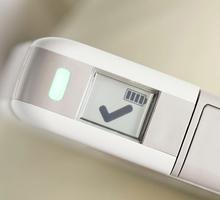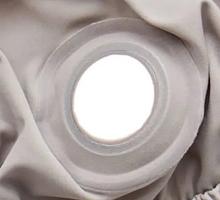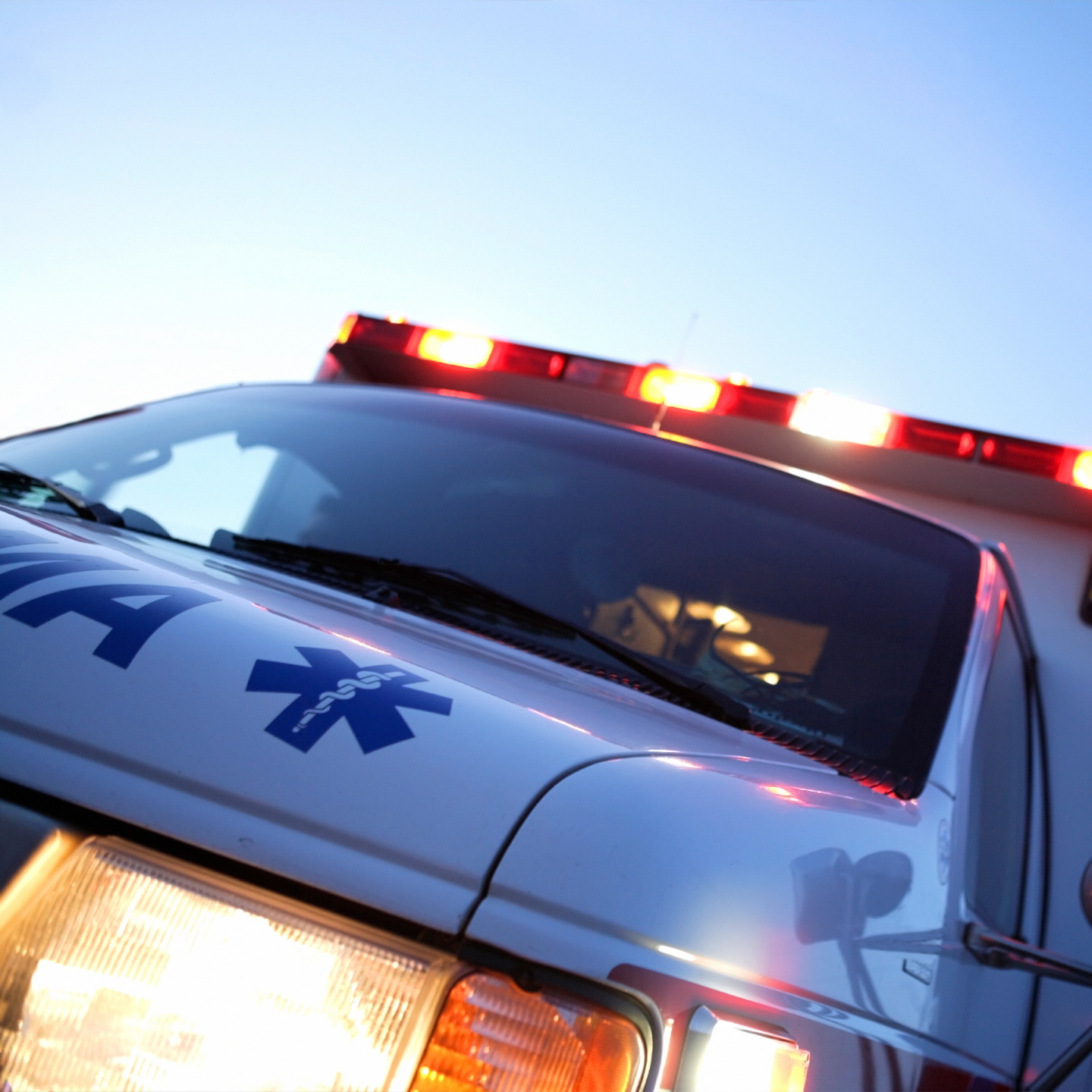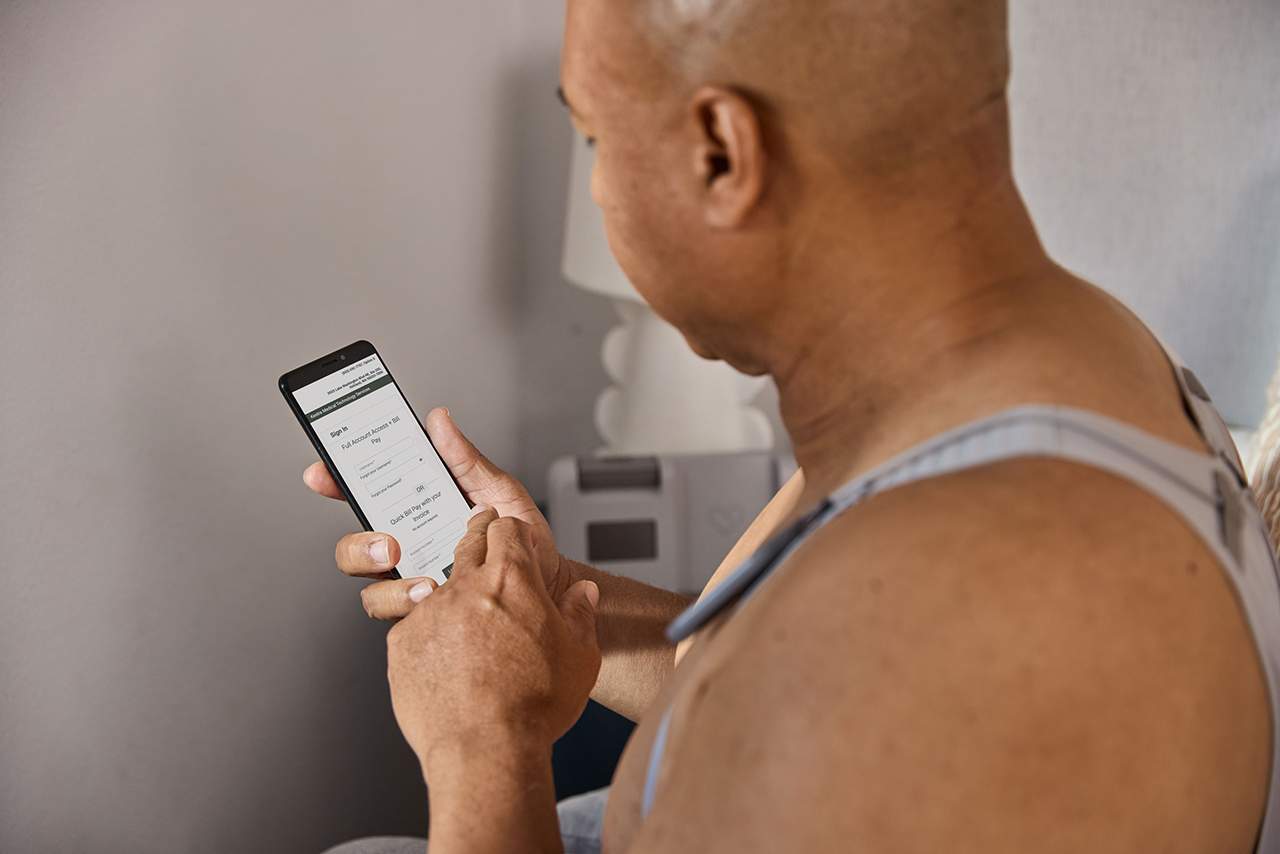
Recover
with Confidence
What is Sudden Cardiac Arrest?
Sudden Cardiac Arrest (SCA) happens when an electrical malfunction in the heart causes a ventricular arrhythmia that results in the heart not pumping blood sufficiently throughout the body, which can lead to loss of consciousness and even death if not treated quickly.
Wearable defibrillators (WCDs) are a recommended treatment for monitoring and protecting patients with a low ejection fraction (EF), a measure of how well the heart is pumping blood. An EF of 35% or below is considered very low¹. A low EF percentage indicates weakened or damaged heart muscles that do not pump blood efficiently and increases the risk of SCA.
WCDs continuously monitor a patient’s heart rhythm. If a potentially life-threatening arrhythmia is detected, the WCD first alarms the patient and then safely administers a defibrillation shock in order to return the patient’s heart rhythm to normal.

What are Ventricular Tachycardia and Ventricular Fibrillation?
Both ventricular tachycardia (VT), a very fast heartbeat, and ventricular fibrillation (VF), a disorganized heartbeat, are forms of arrhythmias that can be life-threatening and result in SCA.
If a heart goes into VT or VF, rapid defibrillation is crucial, as chances of survival decrease about 10% with each passing minute.²
The ASSURE system can detect these arrythmias and, if needed, quickly and automatically deliver appropriate defibrillation to restore normal heart rhythm.

What is Defibrillation?
When a heart is in a dangerous rhythm such as ventricular fibrillation, a defibrillator can provide effective therapy. A defibrillation shock sends a burst of energy through the heart to reset its natural pacemaker to return to a normal rhythm.
Wearable defibrillators can offer support and protection during cardiac recovery. They are worn underneath regular clothing and can automatically detect SCA and safely deliver a defibrillation shock, even when a patient is alone or asleep.
The ASSURE system from Kestra Medical Technologies is a modern wearable defibrillator designed to be comfortably worn for a temporary period to protect against SCA. It can protect you while you wear it, day or night, even when alone. And it can provide important information to help support your recovery.
Other types of defibrillators include automated external defibrillators (AEDs) often seen in public spaces. They are highly effective but require a medical professional or bystander to be present to use the device. Internal defibrillators, or implantable cardioverter defibrillators (ICDs), are small, implanted devices attached to the heart. An ICD can deliver defibrillation rapidly and does not require manual assistance. If your doctor determines you are a candidate for an ICD, there is often a waiting period before one can be implanted.


Freedom to Move
SensorFit™ Garments are designed to ensure optimal comfort and performance. They are breathable and lightweight with integrated, cushioned electrocardiogram sensors, and hold the defibrillation therapy pads.
Styled and engineered by leading athletic and sportswear designers, SensorFit Garments are tailored in two styles and a wide range of sizes and can be machine washed.


A Powerful Companion at Your Side
The ASSURE Monitor analyzes heart rhythms, detects arrythmias and provides safe defibrillation if needed. It features advanced technology, including the ASSURE Detection Algorithm with Quad Channel Processing™ and Adaptive Patient Intelligence™.
The Carry Pack can be worn easily clipped to a belt, around the waist, or over the shoulder.

Go
Anywhere
with
Confidence




Important Information About Your ASSURE System
Indications for Use: The ASSURE system is indicated for adult patients who are at risk for sudden cardiac arrest and are not candidates for, or refuse, an implantable defibrillator.
Contraindications: The ASSURE system is contraindicated for use on patients with an active implantable defibrillator.
Intended Use: The ASSURE system is intended for patients who have been prescribed this device by their physician.
Warnings:
Do not place the Monitor, Therapy Cable, Charger, or Battery in water or other liquids. Avoid spilling any liquids on these devices. Exposure to liquids may cause devices to malfunction or fail. Follow the instructions provided with the devices to properly clean these devices.
If you will be away from home for longer than 24 hours, take the spare, fully charged Battery and Charger with you.
During use, do not stack or place the ASSURE system near other electronic equipment. Doing so may cause the system to malfunction or fail due to electromagnetic interference exposure from the other equipment. If such use is necessary, the ASSURE system and the other equipment should be observed to verify that they are operating normally.
Only use portable radio frequency (RF) communications equipment that is included with or intended for use with the ASSURE system. Do not use any other portable RF communications equipment (including antenna cables and external antennas) any closer than 12 inches (30 cm) to any part of the system. Otherwise, equipment performance may suffer.
When washing the Garment, do not use chlorine bleach, bleach alternatives, fabric softeners, or anti-static sprays. In addition, do not use detergents or detergent “pods” that include bleach or fabric softener additives.
Do not connect line voltages, power banks, or other devices that may attempt to use the USB port on the Charger as an input port. The Charger’s USB port is a dedicated charging port that is Output Only and must be used solely to charge connected devices. Always remove the Therapy Cable before washing the Garment.
If the Plug is removed from the Monitor and then reinserted while the ASSURE system is operational, the system may issue the Connect Plug to Monitor alert repeatedly. This alert will continue to play even if the Plug is removed and re-inserted into the Monitor. If this occurs, remove the Battery from the Monitor, and then re-insert it to restart the ASSURE system.






















